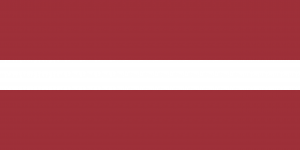Language/Standard-latvian/Grammar/Gender
Hi Standard Latvian learners! 😊
In this lesson, we will learn about the gender rules in Standard Latvian. We will look at the rules, examples, practice and a quiz to test your knowledge. Let's get started!
Rules
Standard Latvian has two genders: masculine and feminine. The gender of a noun is usually determined by its ending.
Masculine nouns usually end in -s, -š, -is, -nis, -us, -ts, -ks, -gs, -ms, -ns, -ps, -rs, -ts, -zs, -čs, -ņš.
Feminine nouns usually end in -a, -e, -ie, -ija, -u, -o, -i, -u, -ū, -ā, -ē, -ī, -ģe, -ķe, -ņe, -še, -že, -če.
There are some exceptions to these rules, so it is important to learn the gender of each noun.
Examples
The table below shows some examples of nouns with their gender.
| Standard Latvian | Pronunciation | English Translation | Gender |
|---|---|---|---|
| māja | mah-yah | house | Feminine |
| dzīvnieks | dzihv-nee-eks | animal | Masculine |
| koks | kohks | tree | Masculine |
| zeme | zeh-meh | land | Feminine |
| gars | gahrs | spirit | Masculine |
Practice
To improve your Standard Latvian Grammar, you can also use the Polyglot Club website. Find native speakers and ask them any questions!
Quiz
Test your knowledge of Standard Latvian gender rules with this quiz.
Questions
1. What are the two genders in Standard Latvian? 2. What are the endings for masculine nouns? 3. What are the endings for feminine nouns? 4. Is there an exception to the gender rules?
Answers
1. The two genders in Standard Latvian are masculine and feminine. 2. Masculine nouns usually end in -s, -š, -is, -nis, -us, -ts, -ks, -gs, -ms, -ns, -ps, -rs, -ts, -zs, -čs, -ņš. 3. Feminine nouns usually end in -a, -e, -ie, -ija, -u, -o, -i, -u, -ū, -ā, -ē, -ī, -ģe, -ķe, -ņe, -še, -že, -če. 4. Yes, there are some exceptions to the gender rules.
➡ If you have any questions, please ask them in the comments section below.
➡ Feel free to edit this wiki page if you think it can be improved. 😎

